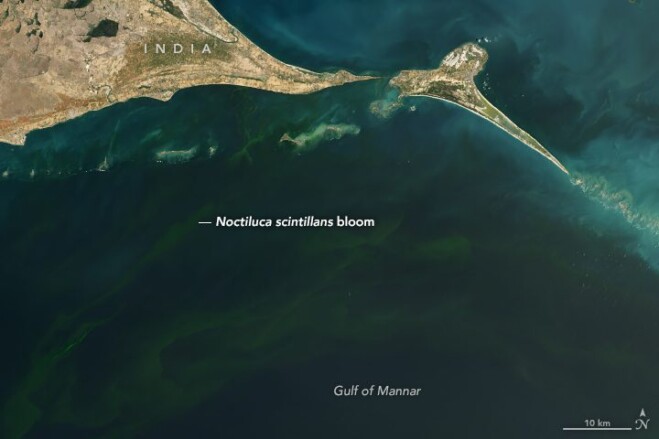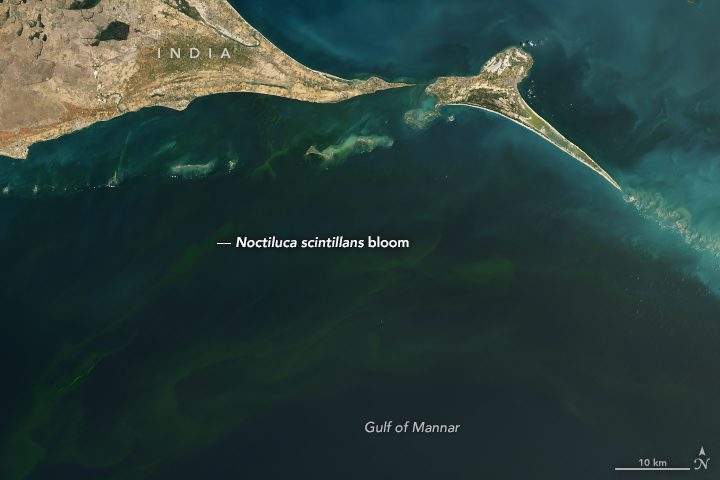

For the last four years, water in the Gulf of Mannar has turned bright green in September and October as the population of a single-celled phytoplankton called Noctiluca scintillans soared. These large blooms of the marine dinoflagellates glow a spectacular shade of blue at night, but their presence can have deadly consequences for marine life by soaking up all the oxygen in the water and causing hypoxia and dead zones.
That’s what was happening on September 23, 2022, when the Operational Land Imager-2 (OLI) on Landsat 9 captured this image of whorls of N. scintillans discoloring waters in northern Sri Lanka and southern India near the Gulf of Mannar Marine Biosphere Reserve. The shallow water in this area normally teems with coral, reef fish, sea turtles, dolphins, dugong and other marine life. But during N. scintillans outbreaks, fish carcasses line beaches and dead coral skeletons transform reefs.
Image Credit: NASA Earth Observatory image by Allison Nussbaum, using Landsat data from the U.S. Geological Survey.